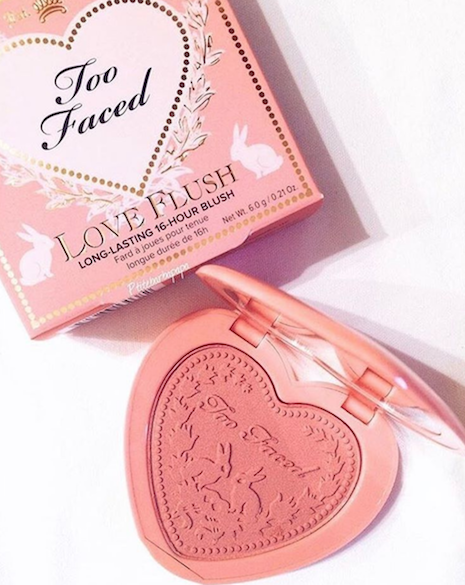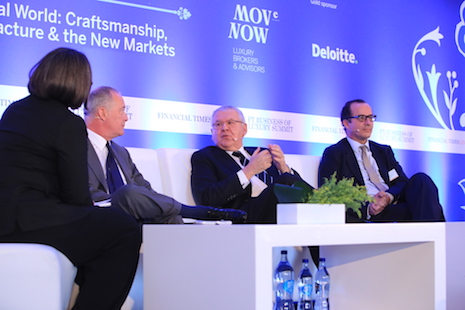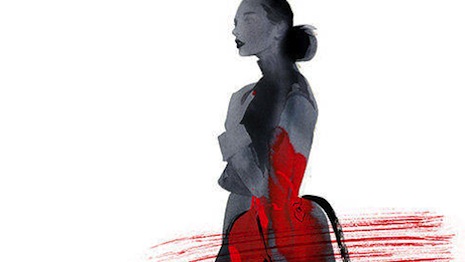LISBON, Portugal – After a relatively quiet 2016, mergers and acquisitions have picked up the pace this year, but is this environment a way to cope with the current luxury market going forward?
Commonly, larger conglomerates, such as Kering Group and LVMH, or private equity firms, purchase smaller, often family-owned, brands that have remained independent and may not have the resources to grow any further in terms of production or market reach. At Financial Times’s Business of Luxury Summit on May 15, panelists during the “Europe’s Next Big Deals” session discussed what has driven merger and acquisition in the luxury space.
"[There is a] big global market," said Francesco Trapani, former CEO of Bulgari, former head of LVMH watches and jewelry business and executive vice president of Tages Holding. "[There are] very large groups that 30 years were not in existence and then you also have small, independent companies.
"We see that some very big groups take advantage of their size, financial muscle and organization and they take over independent companies," he said. "Smaller brands have to fight much larger groups, and eventually this will become more difficult."
Architects of acquisitions
Rachel Sanderson, Milan correspondent for the Financial Times and session moderator, kicked off the conversation by saying that luxury is forecasted to grow by 1 to 4 percent in the year ahead, but will merger and acquisitions become a way of dealing with a volatile landscape for luxury?
Recent mergers and acquisitions in luxury include Luxottica’s merger with lens manufacturer Essilor in a $49 billion deal (see story) and LVMH's purchase of luggage maker Rimowa, which sold 80 percent of its shares to the French conglomerate (see story).
Small-sized and niche brands with a strong digital presence, especially those in the cosmetic space, have also seen high-priced acquisitions. Notably, Estée Lauder Companies acquired prestige cosmetic label Too Faced, seeing potential in both its strong multichannel growth and its millennial following.
Marking the company’s largest acquisition to-date, the $1.45 billion deal was a purchase of the entities that own Too Faced, a maker of cult-favorite cosmetics, with a social media following of more than 7 million (see story).

Too Faced Love Flush blush compact
More recently, CVC Capital Partners, a private holding company, bought a majority stake in Swiss watchmaker Breitling. CVC Capital Partners acquired an 80 percent stake in Breitling and Theodore Schneider, CEO of Breitling, will re-invest for a 20 percent shareholding in Breitling. The financial terms of the transaction have not been disclosed (see story).
Often when a larger group or brand makes a purchase, it is because the company bought is family-owned and the next generations do not have an interest in continuing on that path. This was the case of Bulgari when Mr. Trapani and his family, who founded the jeweler, sold to LVMH.
Italy, in particular, has a large number of mid-sized brands that remain family-owned and independent. The merger and acquisition potential of the country is based on its depth of craftsmanship knowledge and due to the fact that nearly 80 percent of the luxury sector is “Made in Italy.”
Due to this, many wait with baited breath for the day these mid-sized luxury companies are acquired by a larger brand or conglomerate, but it will not be a purchase based on like-mindedness as all companies are individual and unique.
During the panel, Daniel Piette, former chairman/CEO of L Capital and current chairman of First Founders stressed that these deals are not because there are synergies between companies, but rather a structural necessity to produce a sustainable company.
"There are no synergies in the luxury industry,” Mr. Piette said. “Each brand has to be vertically managed and has very little to do with the other brands.
"From a merger and acquisitions point of view, when larger groups by other brands, it is a structural phenomenon," he said. "Synergies do not make sense. It is [financial] architecture."

From left to right: Rachel Sanderson, Francesco Trapani, Daniel Piette and Luigi de Vecchi
For example, the future of Giorgio Armani and Dolce & Gabbana as independent brands is always under the luxury microscope, especially as questions of succession come into play (see story).
This is especially true for the Armani brand now that its founder is in his early 80s. Last summer, Giorgio Armani announced that he will establish a foundation in his name to safeguard the interests and autonomy of the fashion house he began in 1975. Mr. Armani is the brand’s sole shareholder and had hinted at the establishment of a foundation to protect the future of Armani as early as 2012 (see story).
Temperature check
During last year's FT Business of Luxury Summit in San Francisco, an executive from Deloitte Corporate Finance also touched on the subject and how these financial moves are a positive for luxury.
Merger and acquisition deals show signs of a healthy luxury market across most sectors, according to an executive from Deloitte Corporate Finance.
Luxury sales are climbing largely because of hotels and automobiles, but acquisition patterns show that fashion and jewelry are continuing to innovate and produce quality product. While the slowing economy has put luxury brands in a tough position, healthy amounts of venture capital show that the sectors are healthy, meaning that proper marketing is the key component of growth.
Taking mergers and acquisitions as a sign of market healthiness because of the impact they have on growth, Deloitte found that 47.5 percent of the deals were in the personal luxury goods segment, with another 36.2 percent in the hotels. The predominance of these sectors shows that investors are looking for substantial property assets to protect themselves against economic volatility and currency fluctuations (see story).
"The deals are good for Europe, and it is good news for deals in general," said Luigui de Vecchi, chairman, corporate and investment banking, Continental Europe at Citi. "What we are seeing today is many situations that are coming to fruition in the next year, two years.
"The truth is that in the luxury world, we are dealing mainly with families," he said. "When you are dealing with families, the truth is, you never know if these deals will happen or not.
"It is not like you are dealing with a public company and they ascertain a price, and the deal gets done. When you are dealing with families, the reason these deals happen or not has to with an emotional side, a rational side and succession issues."
{"ct":"8pYs3RH3JYJYT3Ep6uZMC5tmidk2Ma3zrohkzYAwa7+9bIh9mr33XYDVBj5XAZb1jvDwuCLLVbdqM0kViYxBznMy4+ihp+iYEZJadSLdNvrEiAr5nGH4u7oU5BIK3Z7RNtAQdJiBHkYMhQeYhA0vD7VfhyhM\/aoimIE9NmO6i9qwBWxgJiqe+pC0cCeVkZo5+6YTBL+wM0JP5mghhnBBddYS4iuRTLysh20DbsHHf60HnbVagP2KFjUI0WrAKW09PLMJcT9tvogHNXZsw0XaWGO3xLSna4RiQQH97BWcPqJOmcBfYBovoBu4MVrJmIMa5v11VcHIBeEsRpuwuaM6geWxo9bzVBoTG+yuSC3gB4Jso+wBjUnXX21BXK0\/NvGhkel\/v67IdEy1ln5sbjAAITrxDne2crWks6oxrelXE7ceAuaJ9HS2fNP5\/pzni4n9m0ki\/q4ZNadez6Bj\/pt9\/0PkqHNLgyYexxBsHkeY3Zg76HMejI36jrviT3G28H7l823VyLBkk1a9CRebZ\/OEMKZQra09x\/lYN9gXxdVtLAohAnygHdHsvMti9Qxc6jwBWPDe8ENotbCQpuEFVxqHe0Nc2MM4NFmcp9W1oBPB89JQimSikI7tJ86SzF3Y5t5aBsk6gU6baDfP3fzNDC2JHIle7Ije2DmEbKHJSCf\/GQBoXHNJ9d\/\/ZDp+iaGL98lLaTS3fZDhVDwH4775W7ITmJbraLMF7cgZ9f4utH64LrK\/Ypc5JXKM6c4HwMXtvwNMspEPexGLMT7jwplW9+LWRqZNEybBo3A3g8Q3hSi7iAnMAwrzMImVDP7z1gX7i9fcTR9o+h+KOH+QYlgEIaypBDH3TQlk6LktySU\/cf86xQ\/z\/poOgf3etGVlVPsSbj\/EtLhGeQzSXMtGJflI5lFK+PoGRfcaN8NYFOIIFNeKmwTyND20yWHe089CkxNwdfSA4IZoHLvj4cUy4MqKKmGZV78lm4FRR5Iz27fYPIKvnd01Ymn2N12aqPEcYUiXB8l2gUmznPj9uvVFqnP9WdAYLOjbLzy1g6dJ5UoGpnblbDTbKXjvSpl8ezMWHV4ax3o3fHZLxMt2iP0q04akFXR+it7l5S3EUo65IqqAoaLvWjRsuQ4k5PW\/FvJlTf9R7PQNh0POVPJLIn4v+YVgV0NxTP+PQrCYUM2yPJyFVHz\/GxaNUhUjyk6vs7iXkOASx69ivbY9h2dkMpJsTv2kz8meOvGppY9q7bEndQbVqTVkuuQ6KFMkDbitdr4XyJSJzW8gi79LQLAbrpJRqjBVhAODDybREztIcgYemKd8ew0CsAxEm3\/0dRJJYlka4z\/4U0gdGGtMuX6NRXctciKXOaaz+YyNeoC7dl7a1U39bztmFBV0zmlkdwhDeZzrMrPVyFXMbzXFGY0B9kyr6xjpjbhI5CAs6ODzlKRLwzCsjrYcu2n84rTFIfRz5nUDXXrDA\/Aa0Bt6K5k7\/bxmpe4ZpfUhdznEqp96HJeRZInqeX3Wh\/2KLpjZAP6+nFvgUchKNCCCt6fHCQUVfxZI6jxQgDmp8www1bc6jiiFC9pmyZMIA1O4Rt3GwjxFm34\/6nlyaxYNpNDAVz6\/iAF60dsYt7pXmzrSEYevzhZ2MNJWQbxUoNb9ZdMUd+eQ3DDvMBYZ5tOj28ANpcOfEg0xACBpqcoNLT7N5tXSl2b\/YsTzHITPa8ttVaMdG1EcdDlD9ylEUPKuZOKE8zq4SOgP41UAAZ1sgykolI+skiAoR8TKOPqB4LksQzVogzDtANsQzh1isM8pOk3ZqQY7nifzCOKPHqsKCqWFeM12cgsdSATFD5QWNBTYYCcfzc9QFqsfvxb12Dza6Kfk5Qh24K8cVKfmS7MJ17+DHBm880VM\/J7\/rBhWKCxk+fQd0atPq9ddBXqmOzUjkXdoBNZNB6zep6sD9ZcrSxoJOLIgjJNy7ztEWwwHu9pbm7Hd8cjLkXg6lSQesKITKjPeeM6sQpNFQwQ7psUBjipd3tpH2QfJBTxVQSW7eYFHnq+pbz6kcQCSP9UpfxRxw7Gdb3i95vibkRHPd9D9eC7dO9D00XTDMAwxOFB6bzeLGpVuFddY1fQ4txJ8M8ZptqtJA259bGd1fQbtVYQcRfs38v1wW9GWCHyJFtJWo\/81TpoX5sbMXQffxWv6J4xQVFKjqMw4nax8zp\/wx+u16DE5VmFHPao0B2D0c732LcGuPkkDf8zauZsYKb4JbxRpHCszeLMSiRwAzMl9j+RMX0p14ZB9RpRAdWksp+IgdZ+27BOGAIy4guNRpRzcSFvLH+74t2991NxHZucp+mMu6tlObkNUsPYPDCpl0D7hk5LzvLP1T+uK5KU7Zp3B\/55BW4+kppcJ2c4PimBvgo\/4CHzmJxFNdNXWFZzZXidXmt0ybsnr\/TTIe458JY+jX\/8c9HQcy15ZKdnCD5yCOKpyZtCV3Buje64ZnHsbGWuqGXUkEuFAFhzd3zRAvEJhx1bZN7582Ei8QCS1IGLHMFZDnhmYptViTRIeorcvvUhrbAKaM8WBPFKPqlyo7bDEGkQ7a+rlRBuZHLVtpwkQQqeuQc+bZUmSu8HVBvZ6T3vV5IoyLhY5LlkWIOSsnxmRHFPfSu\/RIzFcgboeAItyxCouXjgzzfVHWwP\/ihFk9p3Q85y\/pVptB6RkTUvvIptURW5V4v4r0V8KFCWq+5HMDcw81i2Ma1MJQoc2clunMupa082hBknsMMgolqPibuGI8e3O+4XGCU1fwvCR0tj43txHyF8ovVZJeixmJSWgR99\/EYZ58+N1cJARzqsGXWayxTg8S5xegKWpRzs6IK8P5DJ3CtrI5sYii7E1KIWfLA4HvAP5dig9rA959RZswewoCdv43HH+1DIKuRx+ibLK4qAz9lpxTP5HLt7Bi7EMDKlRG9zTQu16f2dfXrIz3OJ\/RvKJztxkRh3ckgxLO7xdkC1w0cIjMJYABRNps+YFrUidrFp5VaVlvbndkejj6UbwYSiuta\/sXpAdu6mul1D9NHNtYZ4kLiT941tg5aUg3Nj\/4vm3nyX9FjMWggrlhQ+90DK6KlJQOrUibqSFA5ST05PhfCW\/i\/pFunKBvNzpXMY87uMgOnN\/r3WKusIBwvG2zZWSuMf+1i7\/bubTN4wMO1bfxaxwwrHL5MqRP+m582q25HsieBakDveWWo1YlWmEPdCVELhQoAbk7ChCZ+jsGQZt2JOIzJc6uqw\/y2IPefVd59hBgdo6VdyZzO51GLGDj0L1y+IKEdXpdiuwEBlrvLEHjPJa6qeyY1KX3JkAFgEbq6UcZJEB\/olSdf222eulQR7FfJDe5kGrFEvsQi6+lvpL6S8jXao3pg9Xha7u2LXXZiIImZ4kFKnTZSffDO1ieXiRtbtMZd8tX3zjeH5NOGEqUS2WX3oY5DWeolDEBa5aym69O1jLzai2HtN04lX3+93xHC+gr2FA8OroOHXId4aR\/xX\/U+cvbNfju4lEo8jOrNXlIDN9LeCSszEu8FvNXhZN5GIYOrL9xG0+Azox1K6huX3AwOBPEVr\/WOGAA0msqZuvisZJRKAkTSKmTMO5FqmyxnK5Wsql5kipyY9zUHDH6sUCLyh\/HpVL9wN+eOi8IUzouFwQFIhIhQgvvL7Wnq5FvpHpn+3HoNRV10DkqUKw5jUTlzxzsJpu2s4CB+dl+EcnJSqxbknEJMbJqX\/EZnDrMNt8BPDN3c0BLrx1SlSNGHUyKuNV9+CBPNU0lZp6JeuQf2+HH7R5IwwKumqZESVOy1fdlXiTTjMsUOHTy0pppwxI\/2sRXniE2x\/n3XEO6ISF1\/xp6vTv\/mNTUpjTXL1xE2xDMRTXWMppmN\/494RPfy1VNQPfqKYfjo5lLDero47JpNUQiJ53TA5aCi8eZpmbp\/CtMWyrX9Mn\/EZViYlibEoaAPvyGcp6EoM4r1x+UD+rqSEp9pDy\/B9BlxRPxbRGpqKWm\/LLu2Z\/VWQ+6QyyiDCD2IwjYy+\/ba\/8NcPkz443eATqlJ1JbOVcP9wMZ\/6fBlGTSLxHEBEuPfcLlU+3MYqYz8HEzxw5neWt1NIPd21m98PT8nXDyQA4hBDn7fcT+OxvMssSknJd73GPdaEg7vPwSaxfvdV9jARRfSDirqXqnnOyLRxa5VYwruZCt+6OJHL+7By4OipD15XT+VVX3Pl+tHeFm656Lr9Nx7vVLmhMN3qB2YNxhIoer4hpgVcTrdlJon3k2iY\/+v3xYNa9ALuAxnq+u1+XGPfXukSUau8PM1YRZcVpR6HGuzaImDXHwxGVYF3PBVklmB9I6YWRmW0rsvzIIXg5MM1BYb2KRi4H3QNkwKE\/v0RmjNB65\/B61n9OQH1bPK6r7T4Ab9SkUhPxfiY+REwu5jZfHC8RhQ069goYf6ggV9Vvy4p+mMUCIDAKJPjjcZlDrIPA3YfMQ5CEk5IIvRLmN6HkyYKJiOvVt4qQ77TvFZ26cvkb7BaGGqbv7v3t3lAkB9Z8I2y4h7MZQaGkpoJTCK9ttxhzggxJYOLeD\/rZa+IvD5X81QlJMw6H70HN2YR8Dadq4YQDmcoEU8GkEHUjuB4RzdPQpkglI8vuWmPr1tNRTJzzkP1Hcp+EeZfZRmqJj7Mt4zJSYdbtJuBYaJr88rRJZEGwpSWO8eo6eCv9zD9+EeFiDLOQV+9TU14TIcICW0l2kAazkujubWVLjFE5wyuPNIS8t6CMl90YZjdCfqaT+qPGIR8Nj7OJoRXOi+eyxJkR83Pi6vrt4D3z3fo8\/zlSGAm9Y0GUpxeQ9b9u\/gg8fJTOoyyZ4Gh1mQTxUJ7DV+Uh6TIwP4T8C7GbhgUQTk23leqX46fhdeygvtXa4z3AfhKGehje9YnEz+THC\/JzH4UZcvaI4A+HUseDE1i4NZ2oBtvVJZPEZR\/tobdqi3DOgdpAhmwJVIKXQ6vqRYrOssPOfU9ZQjAts1vJQsOKVl+KKeFtn+6m8n9TBMYobcEDsA4ciOjLDOfflTM9XnhvtpA74374gFwZ3OUkDGYWFJBIXxNXtiqmuhjz3FpUz87eoOnhcTzlVIzvhtwapjLKT304PTvrICNkJU97oHuEVylO15MTvyEUVTNt5d9iOqroq4envfp2R3vmngQERLXLMR\/S6icuMfutD9ZKKIpGmsdoHzcvKlbh933sRxX69P1vfDrcoQ124yXfUtBHIb8qHs8ZV3z4xvhqR7MzccNtyGExStH9VJG4jvtPC+h8i\/rEhcEnD0YYl6mqOnFIGGEqiRWtPaqM5NtpW4I67a+rQemCnQjDT3j1FELVJbmnGvkleC3E1JAKvN8UXseAcnDX7+OXpMmL4WAffqVExFdBwdRJgRF7ToYwc1+i1QgHF6B\/C9lAB6Xn1UPQQKFSlq+6xKOFUsT+AKYlkPGJSZr5IYrvN3+3Ndf1VrHtTPrflmHmGiI3T0+jdfpAyEmq+b1vzJs\/CiNJ\/BnFodBL5SQsdERvYRrYLnYi6UZ0GWWDO78FWVmnOejCUH1+kxLwBpsUniMvXsG1KVhGZSW4PJTQrV\/JN+VOiAja\/WTFn9WEIXY2jvgrFc5sHNOBDRwi2WHxmP2g0z99aVcJdmJ+OQntJaZw\/9UyeUAZem+0f72ZvKJ4\/NNO9S6HN\/9Ip6vrFGnGaCax0lBBRwiM37mXEijkWxZ6+r30nPdJk2TjBXBAVENLYKandnjP7ahUGihFBvv+6SY8\/z3dJoy4LB2+o4ESfRjMou9Uadbd0f2mFB+IVYsgQWTdtWKWhMKirfOkCODadEEsfzCwR5x3mhNeyooj4bx+nL3n\/9Fu0Nw9Pz4K5DpuL6ZraY0md7DboMkKQCwdWQdyJKhlAnXIfKBTG7pOawHIsEBqYM7OR2IGlwFbATedqYnquAWAYbQMNTjPJVOL08ddsK2j4wMrD7jTlsLFIGQEtbveuajeDjh5ovAdEsYLatI1vaSZtzbxWd54K0i+yA3r1u1cMvA5qdCBWSbLevWHOb68VmIQ7+je8zJBHJmUWbpjsy3NZEDDKO2ZnFTjagTrKs9O3EvDClPpL+7PI6TxUT7CA0EIp6LfTwLH8qWmmcj1xzBkJT8BXN1Xg0WH7nAp\/3On0cdRuuhQ7H4+lLXwjxTOxva6+XMT5zxHJJ8K9irvhDV+cqZQkfPV0rMEZqmyi+UuKMyNq9v1KTZyy0u0wwqpDe1fQjQHTZwxJztbm7EvtyNyaknz+RgHP5RQcpVuBWmrNREzAqnDhDLqAAj+EkpqSvKo8HAiEJ61T+G6h1FuG7JQEDCDcEGKw9pG1mrxEieqHi4sT+y60Mo4QFF8XO8z\/U45bQi8HcPQSNWM3pGYNAth4AH3ipOXuE54KfHFc5gMrynX2F30\/muMhvtmp8ACT1\/jfq1yDCOy4RRiV6n44P\/iVAqDKn1UhoHLCckEU425bEEIwuHJDEaa+otj+DObkggOINw22ErW6U88LBgtzeH0w8RK1nynUw9VttSi+f7J\/ILyyj4iCcGXvqPs7cm3k5iTx2L39euD1uXJFiua0afmOkG9fJL2HDr11SWcmtaPS0pz9OK9CHVQESrWtvr+S3bbDhGegpniWhQgD0by01UAb+5ZWg1Gf2xnhtfNEU19Edzm4+E2QarURP9btldCijJqt1lrzxSPSo2lOF0jtL\/7qartAFZrs8NiY\/\/PoceV\/SizlLVl+ZW\/6eRaiw3F4YabCPo12CVyGcDVE9QJgJ7CAJmT5iTbkMLrnd4m7WDSJz07\/gRrtCuC2slxRVLBaQBDEMT3gVNmAuMF30xm+0oCjnCrahWtWaoP2XYGvSA3YJ32LAHWTnOGA2oRjrrwD18jpPNXYn0sij5eL21nLOHoZa+DLQBNG1RTJ8Pw+Zpubww1nIrlUqJrvVf3JdzSmxFyuKtOgm6igzkZ1ogz4aWfkxIK77KGs9FLmjB+VftgLrhWs7GI7Gsnc8mWxeoVByL0iHvjROJ0\/gzOzbDu1z5uXcojWoAj390c3DGwoPTO1Eu7wTtkDMP+MFiAD7IWURYFJDOs8VnlJP4y1GnfiOydZXbrhqys38EWRuu\/A2lq4Gbx6nR19PfWlmnzk+0wyEcp0bmvAFiThOLHCHyI8\/8tiKAooM\/YndlAjxllMq3t6YmiLT9e\/zM3av+lKxa8qX+ibeS1vve4SXx7ugVLrJRIx8FsvvCiT9GYzhRAiySj+iVofGFVhvP8zTTtDpRWe+rH7v8ZODfKhCsYAy\/+6nUi719VTqEen4LWpRbDRJKvn89TE1MIoKccNFzKYsN43kU9afuVLHhqz7O7c85V1xU7vPg4BOuIatO+6sZA7rxXY8dg+T2+w7qnj5\/AOW96w\/8MMnn+fG4SbtzpP3HGUGeDGc4xAx1ALS6qWFjOCDdKmLiJm4\/IL4V\/7PbWY6tllZiYEJohW60\/WJoBI2YhRh5QOXdRQ1tijpcxa52R4uDfCd38USr7Vo2GApnZlsZlr2+ut+UxTbqMJLkyHZ9qHTjeBYMS+kGyD86Czvmf7+3NFowugVwAZWCq+caNHPGFJFVVjnRsYCqS7R67o8ML6ns00l+TSmhrEHZx2kjZ8sLUC2e8pehnw\/uHRRHYoeLpG7lOXRrRJHCXKDwT2dgktp62Osk441+DsZGPjluwM5u50TN36ypifrIWEymgGUBAHDxGws9wKZnTGAuHBWqiNVTQBUYlcKVJENz1FMdTMlNW4R5unzjMvjANTjWd+9wJ7vGhZMDb2WVmamU3VDrgfPcYZ4+HZv7Yw9KsStEoezXwr4\/xWq\/uv6LXtlSRQ2fckb6bk0e37cwG0xEu6QOE+AU8JX1g2pBa1HZviBxJ5g4VhEdE+QTtHs7NUU3uq9kk9XAa80cX18jUQdIp4v50zU\/hqHaL7zeQZU1uWASdcPXEPfDP2qyLyC\/9svvGQ1A40C9JsMrd1BzuVNF9dKRt8iXQmM\/IB+XNpBu5k0McvdEvVqWMpZx7wxtNW5vTW4FgGaMf6zFg1trZfOBXXbRyNhkZMIn53vRR0pu0cln2Uoo4fvGJGQQLXaNoOjr123wkFEjALIqni3ZyOgmFL+WL+6pcqRvXqeML2Z62SEWJ9exuRfCWbl0eyv6IlMHYNo0t4mVyqUXRGsQtb4W2NHWhWEyLozY9DfN9a6TVL\/zOTh5MHHYc8ASt5ViUJNQ2CWe\/d62vax+mLVUMksvVhvCZeW2I1WwmR611gPauhO0piUWRPHB1j8QxA3j\/J1gQ4pxOg\/UQtBIqQxgaO\/Fsxp\/t70Kd+TsbFe3qq8xKPFdDnx3\/TU6IsUT8\/fq0ChC3MBSXDpNpVCdYFJIoWIzfTeXr0QzXnftd69NiwSFU\/Yvi0Aj+nJik7TXFuSEhYpOoTO+rwixm1Y\/jM2KR2SeXBZmTSZgXgcoYxAJ5aL27wAnoTuVqYgG0Wa4AuFiXxctK0jdsu8CcI5h++NUQHxmAc3511YOw2GQDkf8L9TDuW7xQqj+Me8djKD2nLiW0Rsn3HOMkT\/j7ZvV66E549kOh6cZz\/XpiK4cRkbQWLdBRBbiE5OWB+azU1587LnQoy46t6Q+xAOn0IyhN+6zRuWlPcGsUquinI1lMaanPS4N35Wwr83YP2ahXlR7zOnpoCa8cNuEpg8E5ZJnWcgSrhs+Jxzb8CP9VOEJu41\/913gEQRtoVfdWhaCg3BsWM0al+4KAhLrevArNygADRNlURPYfP2vN4bIYEy143KOSNfBox1L5mdgWppVhbvPzwMgL\/s0IdAuhznLxGbVdCG9rRBhZfKQrMurepZKLL2A8mcXP+ETRnd1XUkmxaj5OJcWj43pNvOEFq0AzWdxIztzYzvsU6GWmtWcq4zZCd+h5hy2crQzBUOGfWe4I6Ag7G5jUsDWMBGNXmX766LvNm9uG8NTDkr+vAcTGWuNqfHIqPVRVBhvURWShXbmCSe4x6y3wYCUEnrx0Xjpd2Xyq6g2K9CrFtHBYxp4f\/A0YiZTBWh6qHmsLslTHOa2t2BIywzkSbR75t3yQnK9UxVRqp4v208+IdRgFS1CeXnxSPbfWKC8PfBy249VK\/qUUdYqdFjTm1eY+HZRxnRnZhyeNlQBMmqcVCfyixzRPm25Mwn06RU5Y8H4Ob2kG1BDiH0R47Vz6gQSWQnEtypvoFV39QeSPd3bdJX4IqSBCBuiD8v+pPiSod6RlZR06L0DnuQclDHgbnKxWL637wa1TWrsshfX3fTvvCEPQ0lnfAs7qUS+znzU1PPs2EN7GFGJHNfm2ZxqDVKWngdKVHcoAn8ESO\/cil2+Ucd72rQBUWQmC+Olb0HGBGW9eZuducYorgyrQ9Vkwv1aedD8ty32ZDAkMafvZ\/gBFP5UeUqAC4O4iqB8yp7iW7DXp9r\/m2lrcNVBgatJSTPYlZL6fuvn4IgXGLhIRzpWx6MYns7bW5r2hthkk4195WZYEJb6k2F2U\/yqRidISl7nKLAyqVmbKDRnz0lVNuWnwq0mA7TcOPSvHrUBT1cPzPs0Q4Xu\/r4euxPcMSF3cWHlLvr+FgF+XQHyDeCFx+kHqoB2iIYfwPTXMIy9Ps\/5oR\/RC619xh6g8aDtGZ7xXr017yHbO1FxdrJEXoo7e4aWqV+raySbQLWSHbtKCf1wds6mp7Xq+dyKSUSrpv5HTTG4wxAr59yLxyJmqP3MG4MgWJp9Toih3cqzKO1gruZbgGyxMX5Y+CGdk0UDgm0Eb3EETYRpqrEUEX3S5+eVo0rtLPgQRrCkrivM4yfFWd5NlrUFwKKoFy83uk95ZIZjV19EaXuq6D7igxUOrHq2AM3+hzXJXTJKRt81jhgZSBcvvq9wReJ2yqPcOBAZkuSgSZx5lzrddTTTwvsz0DM7QHQVbHX+QcaI19Ho8WZqPRV9TJeP1ns\/bs4mvciBmQPZbU7kRtfFuzcc\/Qb6y1d43tvjhXPClnQ5pjFEra+FwMUBDId4BYn6XoxzuCOzao1eVuHpqVv1CnpAp1BVHTZhoEtgV\/XrCyDN\/Ze61z3TRiWu9IgHLemVuhOZfUqOahHJBUsYuAdgAV+W4Fsc1xUcPVDrfvO8sgv9paDASOMn2WRdcvxFmmcMubrT0eSg5IS3CxgKT2D+wKoQxEWdV1lhWbXSinb5nIv3o0QLvRdseoGwpOl2YkzNDDPbKoap0dP1UzVN7jDPR3SW2OxjTyaB9ov\/bUx8WQQcU72WuY\/rrJ1\/sT4dN0RoMvuX5p7dbbfxe+CG+k\/WsctfR2CehiW+wl7sN6Owsq3hqugz+Npesh4UwJ29P3dGg\/bZlNd6NaaIXkAmMKuHv\/Q6x+yHyRLXzQUQKasyyb7iunMXaDbqPJ8Y+Dgt9s642Xj1oo7\/ne9AIpwRtcdjNVnZl74+kG1Qcc4\/X0NmUVRvAfA5w1iYKtQl\/fDLdozCu6PY7iItBqxhqUNDv76DWs6dlewlqNuswQ0ys1G1Gq9rd1pciWQF8oNNXULoaVzpWb0RYnaKFPqWkJwKR+9onsG5oS8US3K9\/dFMS+3l6T1IdDs9EzLt05d8hABXGFCYhIUiPZQsQBjoqW7lg6wStysmF1c9bZACEKJMz\/9ub7s2fAHl3ndtnvQ9WCzb53Kc216PqaJ3vHrPnFZvvWfoLD6jbAW9F+pv5Wr53ji5sH6ZBgOCvRXFKKmrFE0VEycIyJE7l2ZBpXhuctr4brRYshKD1CnhRF\/01e80LniQg\/4NCBBps6t4g10q4eXOq0wJJkogZDSqKjosw7hPxZFLcvNrATr1lT\/tTGExxHUvTmwMy1NfYbuROulLyNYno\/6Ua2q4pTUlNiH8ca7b4qj09r2gu5epzCPQ2QIlBuoFV8tHQZkdsT61mOjqFWJUsnOgD5K3hBC9sF4STvPKgvqZCj06Yhse6a7hD69KME24F+Lz2nmg8Wlxokk3wGGJSdQfwk94pxqBJIcWZr7KMyVEbw6Rg9UjDYl459V+ABEK9FDBRSC7PP6G7VUUJD9n5I7DFWLdAEAEZBZAhAZcr6mZ\/xupmuRh5JJ66UfWeV741zGpPBnjGi0gK6oESzPBpFqqARTwyoMxb3N5yLAlZXL42Levz838J+vIf8mz1ZCQAeJu8\/NspCMZp+GtCygBhaDxjzdClhlKc8nnhW5y26UP5GAHrDhDj\/\/ZRZlCIB6MVBMkbED6QBzm8nCLPO1JXM8QXOm8g6HQsEkFJ9nemJJjXmm2clHUlQzFnLmmvKQAXVPL91DnvlNQ16xNqvcqWGSkGNrkgxA3W4VsiVcDiypeS2R2FbgurpcOKmHq\/D8wsq\/lTq09y37gzsTy6mvZHjMnRuw05d7aic0W3oacbTfVGxN5auztHauoTjR8yCb5Z4UA9i0Lq2+01PSPuVJEGPoT6GqMfFDv8LT9l9I1H7jV29nmBEONzjSmABscn+zZ1QS\/EkXO94GIioyKjIAXHot9Q3b6QqyfUv23nSZPRY1chs09WsddhgAKNKR4wSg\/MJOUDPMYezt91Ft4u4jrrr54gRJXL\/vRpVrRkpAjLvnjPREGkosF5js+9nkP74lBRc4l1p4V2sP5jq4FI6HAG1LZ6ly3X\/6lRgm0ZzTsVBr\/U4wtr\/GOtWeep5zbIzgqWXk6yjtznzo8EVx7floXksP7ZWiCUK6FkhLujf2\/XKzGVnBbC1ATOfl7msXcLG2VurT3hDwZBUGTJ72suTgMv6TWTkawk\/EzOmP7LfMOYszT\/hu35W2nAV0gZagkZdaNIxo3j\/4OQvMZLrm8vGihRMCegVnFtVRFb+U2pYA0Un1o\/zxeci\/Q\/ZO1grmdpvkREbSv3nUkcVaSYx1qut5UY9SE4suD3lwxFm1CgKKZczuNyKa8W9uY9\/AB8ky7Z1vwkIKErG4rQG2L47Zd1A51BiN5A6rmXPkK+oC1BKUtDCO+XEjaJxpTsGEPIsIwFVZFVH0vN","iv":"8a22b62743c50ed3f831e09dfe3455db","s":"619e3e23be4f6ddd"}
